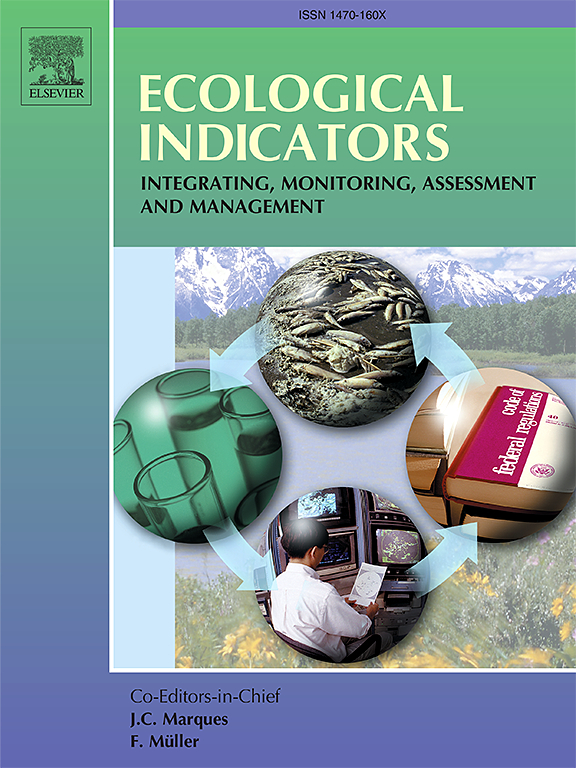Regional nutrient emissions and hydrological regime modulate the spatiotemporal patterns of nutrient levels within lake bay
IF 7
2区 环境科学与生态学
Q1 ENVIRONMENTAL SCIENCES
引用次数: 0
Abstract
Many rivers and lakes worldwide, especially lake bays adjacent to rivers, have experienced eutrophication. However, the effects of nutrient emission reduction and hydrological conditions on the levels and spatiotemporal distribution patterns of nitrogen (N) and phosphorus (P) in lake bays remained insufficiently understood. In this study, a dynamic model was developed to track nutrient transport processes from source areas to rivers and lake bays, and applied it to Zhushan Bay and its upstream region in the Taihu Basin, China. Hydro-chemical analysis results indicated that during the wet season, the total nitrogen (TN) concentration (1.64 mg·L-1) in the river inflow section was higher than that in the lake bay (1.48 mg·L-1), while total phosphorus (TP) (0.24 mg·L-1) was lower than in the lake bay (0.30 mg·L-1). The model results showed that in 2020, domestic sewage sources (38.24 %) and surface sources from cultivated land (33.14 %) were the primary contributors of fluvial TN, while livestock and poultry breeding sources (59.37 %) were the main sources of fluvial TP. Scenario simulations indicated that a 30 % reduction in nutrient emissions led to a corresponding decrease in TN and TP loads in the lake bays, with more significant reductions observed during the dry season (TN: 3.05 %; TP: 9.51 %). A 12 % reduction in river discharge during the dry season resulted in a corresponding decrease in TN and TP loads in the lake bays, with the reduction in TP (1.81 %) greater than that of TN (1.39 %). This study offered insights into nutrient transport and guidance for managing nutrients in lake basins.

求助全文
约1分钟内获得全文
求助全文
来源期刊

Ecological Indicators
环境科学-环境科学
CiteScore
11.80
自引率
8.70%
发文量
1163
审稿时长
78 days
期刊介绍:
The ultimate aim of Ecological Indicators is to integrate the monitoring and assessment of ecological and environmental indicators with management practices. The journal provides a forum for the discussion of the applied scientific development and review of traditional indicator approaches as well as for theoretical, modelling and quantitative applications such as index development. Research into the following areas will be published.
• All aspects of ecological and environmental indicators and indices.
• New indicators, and new approaches and methods for indicator development, testing and use.
• Development and modelling of indices, e.g. application of indicator suites across multiple scales and resources.
• Analysis and research of resource, system- and scale-specific indicators.
• Methods for integration of social and other valuation metrics for the production of scientifically rigorous and politically-relevant assessments using indicator-based monitoring and assessment programs.
• How research indicators can be transformed into direct application for management purposes.
• Broader assessment objectives and methods, e.g. biodiversity, biological integrity, and sustainability, through the use of indicators.
• Resource-specific indicators such as landscape, agroecosystems, forests, wetlands, etc.
 求助内容:
求助内容: 应助结果提醒方式:
应助结果提醒方式:


